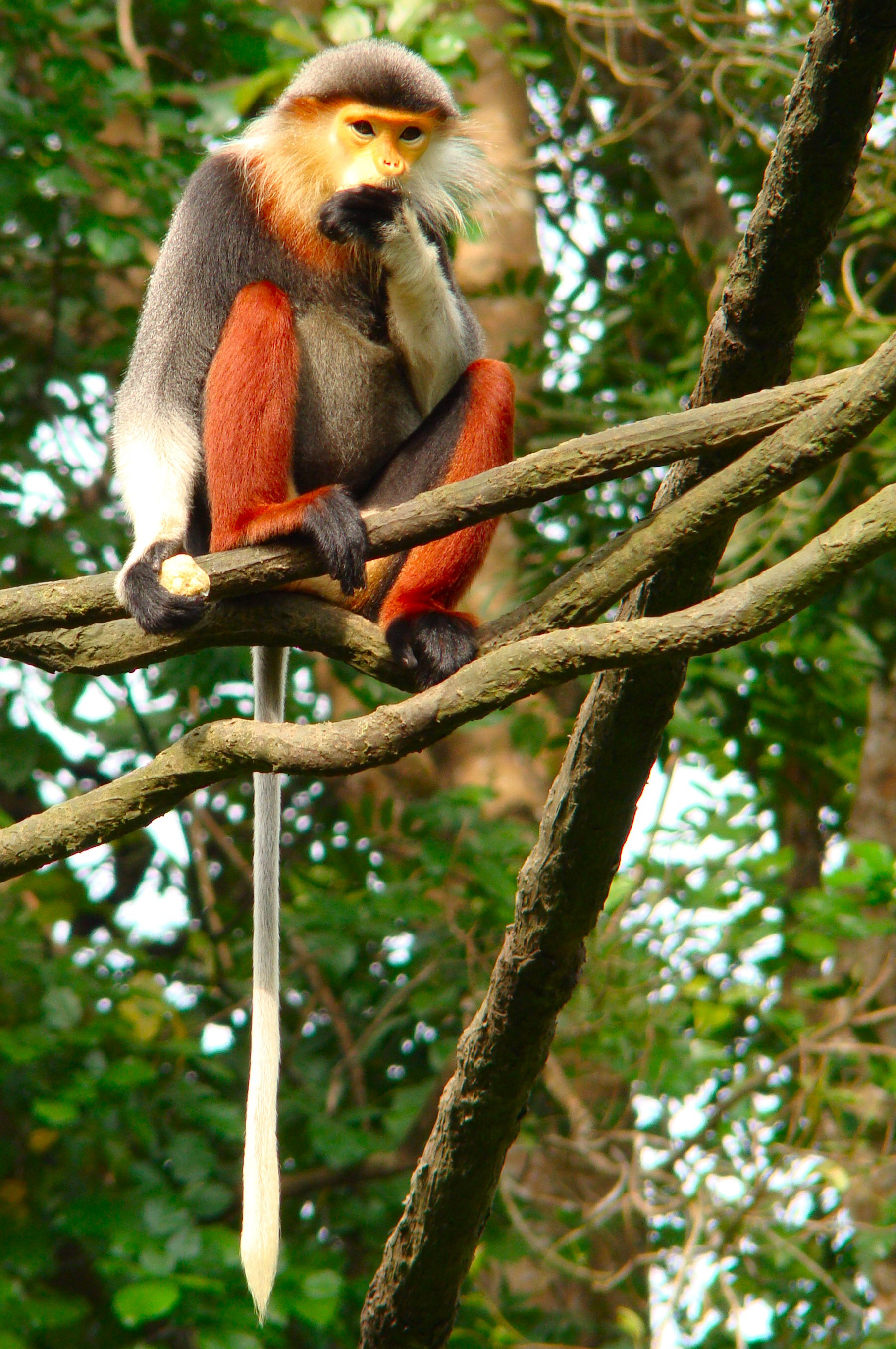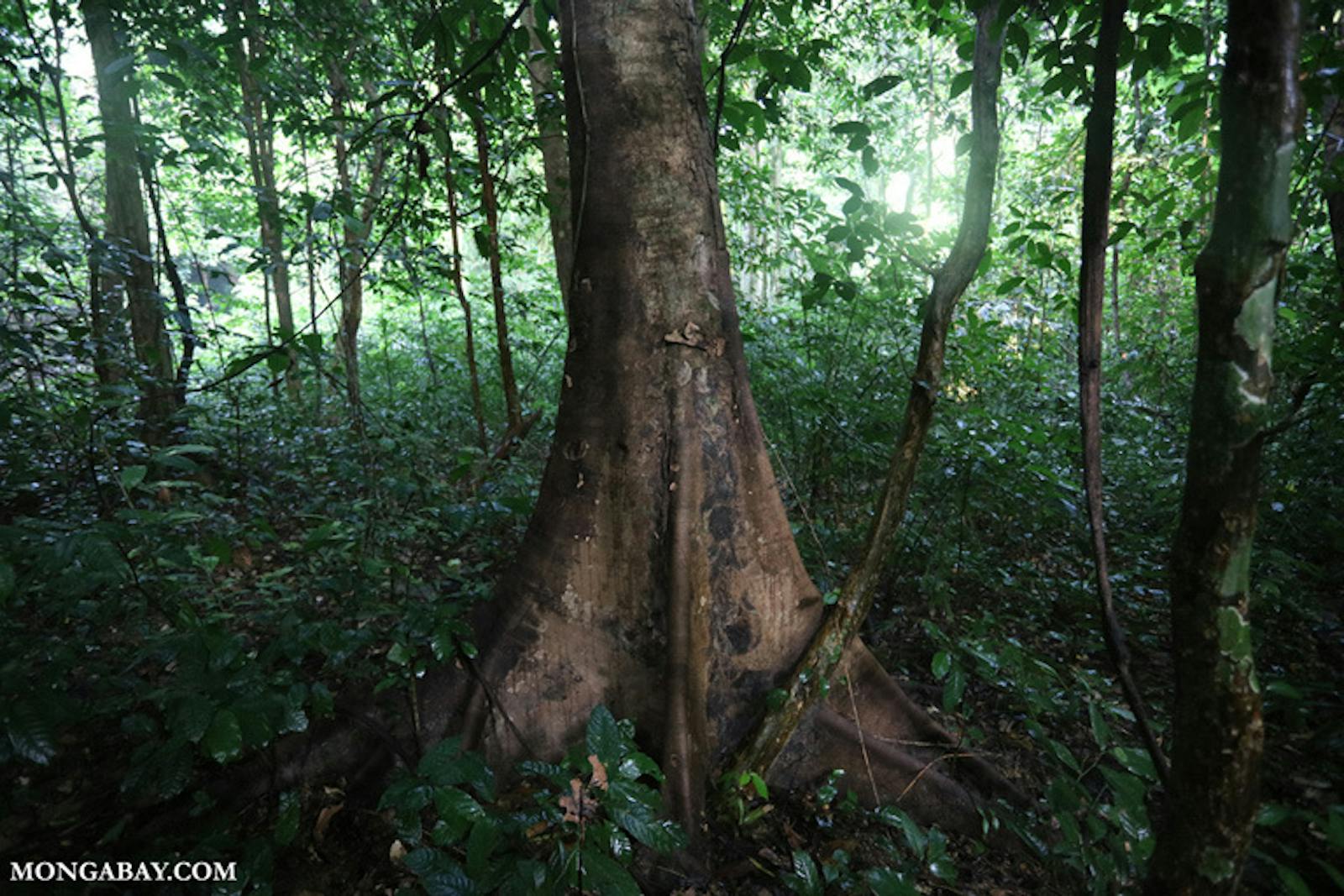Northern Vietnam Lowland Rainforests
The ecoregion’s land area is provided in units of 1,000 hectares. The conservation target is the Global Safety Net (GSN1) area for the given ecoregion. The protection level indicates the percentage of the GSN goal that is currently protected on a scale of 0-10. N/A means data is not available at this time.
Bioregion: Indochina Mixed Forests & Peatlands (IM12)
Realm: Indomalaya
Ecoregion Size (1000 ha):
2,264
Ecoregion ID:
260
Conservation Target:
19%
Protection Level:
3
States: Vietnam
The exceptional floral diversity of the small fragments of natural forests that are left, and now within protected areas, offer a glimpse of how species-rich these lowland rainforests had once been. Unfortunately, centuries of forest conversion has cleared or modified most of these forests. Large areas are, even now, being replaced with Acacia monoculture plantations to supply the paper pulp industry. Indiscriminate hunting has extirpated virtually all fauna, creating ‘empty forests’; everything that walks, crawls, flies, or swims has been fair game for local consumption and the international wildlife market.
_resized.jpg)
The flagship species of the Northern Vietnam Lowland Rainforests ecoregion is the Francois’s leaf monkey. Image credit: Courtesy of David Ellis, Flickr
The Northern Vietnam Lowland Rain Forests ecoregion extends south from the Red River, along the coast and lowlands, to Tam Ky in Central Vietnam. The ecoregion’s rainforest are matched by diverse geological formations of limestone substrates. The climate is tropical monsoonal, with high temperatures and abundant precipitation that peaks in September and October, which is generally later than in other regions of Southeast Asia. There is a precipitation gradient from north to south; mean annual rainfall measured in Hanoi and Vinh is about 1,800 mm, but further south in Hue, it averages about 3,000 mm. Each month receives at least 50 mm of rainfall.
The heavy rainfall and short dry season create ideal conditions for wet evergreen forests. The best examples of these forests are in Cuc Phuong and Pu Mat National Parks; in the former, over 1,800 vascular plant species grow in the relatively small space of about 200 km2. Overall, the flora shows a strong affinity to southern China’s species, although species of Hopea and Parashorea, which are members of the family Dipterocarpaceae and a ‘typical’ tree group in tropical rainforests, are ecologically important trees in these forests. The forests are characterized by a dense, three-tiered canopy that rises to 25 or 35 m, with emergent trees rising to 45 m.

Red shanked douc langur. Image credit: Bjørn Christian Tørrissen, Creative Commons
The canopy trees include species of Hopea, Parashorea, Castanopsis, and Madhuca, with the fan palm Livistona saribus being a common sub-canopy species where forest gaps let in some sunlight. The forests that are logged can be identified by the presence of Knema erratica, a fast-growing colonizer, and an increased dominance of Livistona saribus.
Most of the fauna has been extirpated. But a few species still cling on, and should be conservation foci. These include several endangered and critically endangered species such as the white-cheeked gibbon, red-shanked douc langur, and Francois’s leaf monkey.
Another little-known nocturnal species is the endangered Owston’s banded civet, whose populations had a wide distribution in Vietnam, Laos, and southern China but are currently patchy and declining. These civets are easily identifiable by their distinct broad black stripes on a tawny buff-grey body and a pointed face. A solitary animal, they scent-mark to inform conspecifics of their territories. But these scent glands have also led to the downfall of this species, as they are hunted for use in traditional medicines.
The existing protected areas in this ecoregion are small. Much of the remaining natural forests have also been converted, many into monoculture Acacia plantations, which likely inflate the existing statistics of remaining forest cover. There are several initiatives to reforest and restore the native forests with the native flora and fauna.
Thus, the recommended conservation interventions are to: 1) support the reforestation and restoration of native forests; 2) enforce hunting bans to protect and restore wildlife populations; and 3) expand the existing protected area system and its connectivity in the ecoregion.
Citations
1. Van, Y.T. and Cochard, R., 2017. Tree species diversity and utilities in a contracting lowland hillside rainforest fragment in Central Vietnam. Forest Ecosystems, 4(1), 19pp
2. Wikramanayake, E, E. Dinerstein, et al. 2002. Terrestrial Ecoregions of the Indo-Pacific: A Conservation Assessment. Island Press.
3. Critical Ecosystems Partnership Fund. 2012. Ecosystem Profile. Indo-Burma Biodiversity Hotspot. 2011 Update. https://www.cepf.net/Documents/final.indoburma_indochina.ep.pdf Accessed Dec 2017.



